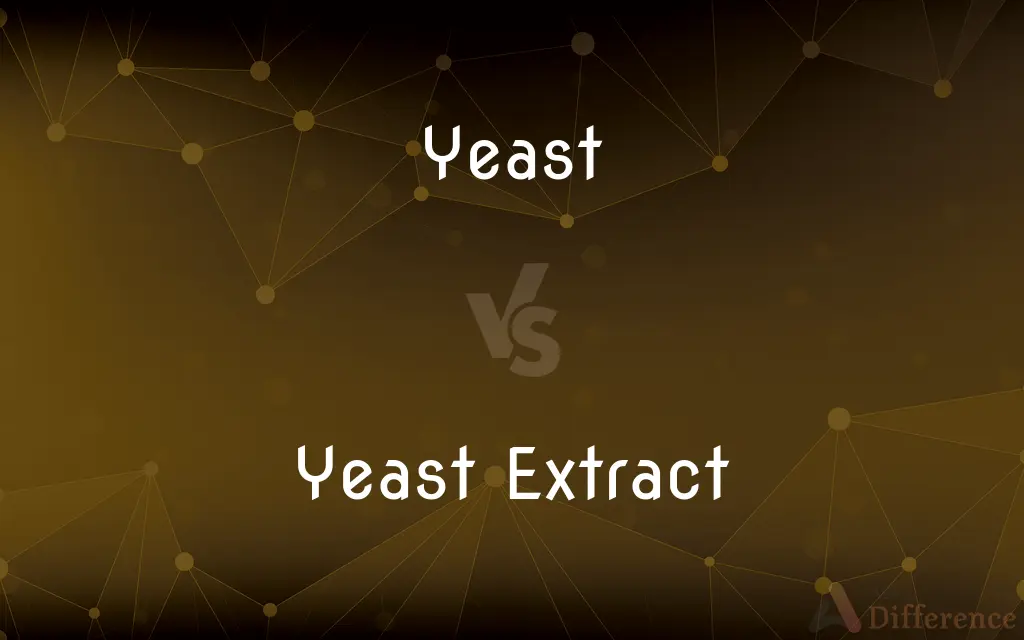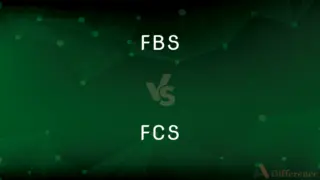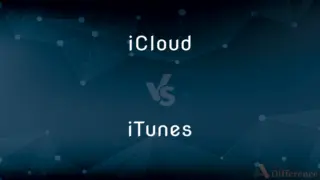Yeast vs. Yeast Extract — What's the Difference?
By Fiza Rafique & Urooj Arif — Published on March 5, 2024
Yeast is a living organism used in baking and brewing, while yeast extract is a flavorful product made from the breakdown of yeast cells, often used as a food additive.

Difference Between Yeast and Yeast Extract
Table of Contents
ADVERTISEMENT
Key Differences
Yeast, a unicellular fungus, plays a crucial role in fermentation, causing dough to rise by producing carbon dioxide. This process is essential in baking bread and brewing beer. Yeast extract, on the other hand, is created by breaking down yeast cells, resulting in a concentrated product rich in flavors and nutrients, commonly used as a food seasoning or additive.
Yeast is alive and active, used to ferment sugars into alcohol and carbon dioxide, whereas yeast extract is non-living. The extract is a byproduct of yeast that has been killed and broken down, primarily used to enhance the taste of food products, offering a savory, umami flavor profile.
The production process of yeast involves cultivation in controlled environments, feeding on sugars to grow and reproduce. In contrast, yeast extract production involves the autolysis of yeast, where enzymes break down the cells, separating the soluble from the insoluble components, leading to a paste or powder form.
Yeast is typically sold in various forms such as fresh, dry, or instant, each with different uses in cooking and baking. Yeast extract, however, is sold as a thick paste or a dried powder, and is often found in the ingredients list of savory foods like soups, broths, and snack seasonings.
Health-wise, yeast is a source of vitamins, particularly B-complex, and minerals, beneficial for digestion and overall health. Yeast extract, while retaining some nutritional value, is valued more for its intense flavor, often used in small quantities to enrich dishes or as a vegetarian substitute for meat flavors.
ADVERTISEMENT
Comparison Chart
Nature
Living organism
Non-living, flavoring product
Primary Use
Fermentation in baking and brewing
Food seasoning and additive
Production
Grown in controlled conditions
Produced by breaking down yeast cells
Form
Fresh, dry, or instant
Paste or powder
Flavor Profile
Neutral, changes during fermentation
Savory, umami-rich
Nutritional Value
High in vitamins, particularly B-complex
Retains some nutrients, used for flavor
Application
Directly used in doughs and brews
Added to foods for flavor enhancement
State
Active in fermentation
Inactive, does not ferment
Health Benefits
Supports digestion, source of nutrients
Used in moderation, adds depth to dishes
Compare with Definitions
Yeast
A living fungus used in baking and brewing to ferment sugars.
Yeast is added to dough to make bread rise.
Yeast Extract
Contains some nutritional value, including B vitamins.
Yeast extract adds not only flavor but also nutrients to foods.
Yeast
Sold in fresh, dry, or instant forms, each suited to different culinary uses.
Dry yeast is convenient for home baking.
Yeast Extract
Comes in a paste or powder form, rich in umami taste.
A spoonful of yeast extract can add depth to vegetarian dishes.
Yeast
Consumes sugars, producing carbon dioxide and alcohol in the process.
In brewing, yeast ferments sugars into alcohol.
Yeast Extract
A concentrated flavoring agent made from broken-down yeast cells.
Yeast extract is used to enhance the flavor of soups.
Yeast
Requires warm, moist conditions to activate and ferment.
Yeast is activated in warm water before being added to flour.
Yeast Extract
Produced through autolysis, separating soluble from insoluble components.
Yeast extract is the result of yeast cells being enzymatically broken down.
Yeast
Source of B vitamins and minerals, beneficial for health.
Consuming yeast can help improve your intake of B vitamins.
Yeast Extract
Often used as a food additive for its savory flavor profile.
Yeast extract is a common ingredient in savory snacks.
Yeast
Any of numerous fungi that exhibit a one-celled growth form and reproduce by budding, including certain candidas that can cause infections in humans.
Yeast
Froth consisting of yeast cells together with the carbon dioxide they produce in the process of fermentation, present in or added to fruit juices and other substances in the production of alcoholic beverages.
Yeast
A powdered or compressed commercial preparation of yeast cells, used chiefly as a leavening agent or as a dietary supplement.
Yeast
An often humid, yellowish froth produced by fermenting malt worts, and used to brew beer, leaven bread, and also used in certain medicines.
Yeast
To ferment.
Yeast
A commercial leavening agent containing yeast cells; used to raise the dough in making bread and for fermenting beer or whiskey
Common Curiosities
Is yeast extract vegan?
Yes, yeast extract is considered vegan as it is derived from yeast and does not contain animal products.
Does yeast extract contain MSG?
Yeast extract naturally contains glutamates, which can provide a flavor similar to MSG, but it is not MSG.
What is yeast extract?
Yeast extract is a flavorful product made from the breakdown of yeast cells, used as a food additive.
Is yeast healthy?
Yes, yeast is rich in nutrients, including B vitamins and minerals, and can support digestive health.
How is yeast different from yeast extract?
Yeast is a living organism used for fermentation, while yeast extract is a non-living product used for flavoring.
Where can I buy yeast extract?
Yeast extract is available in supermarkets, often near other spreads or in the seasoning aisle.
Can yeast extract be used for baking?
No, yeast extract cannot be used for baking as it does not ferment or produce carbon dioxide.
Is yeast extract healthy?
Yeast extract can be healthy in moderation, offering some B vitamins and nutrients, but it is primarily used for flavor.
How do you use yeast in cooking?
Yeast is used in cooking to ferment and leaven doughs for bread, pastries, and other baked goods.
Can yeast extract help in baking?
Yeast extract does not aid in baking as it does not ferment, but it can add flavor to baked goods.
What is yeast?
Yeast is a living fungus used in fermentation processes, like baking and brewing, to produce carbon dioxide and alcohol.
Can I substitute yeast with yeast extract in recipes?
No, they serve different purposes; yeast for fermentation and rising, and yeast extract for flavoring.
Is there a difference in nutritional value between yeast and yeast extract?
Both contain B vitamins, but yeast is used for its leavening ability while yeast extract is used for flavor and has a different nutrient profile due to processing.
How do you use yeast extract in cooking?
Yeast extract is used to add savory flavors to soups, stews, sauces, and as a spread.
Does yeast extract taste like yeast?
Yeast extract has a more concentrated and savory flavor than yeast, which is relatively neutral until fermented.
Share Your Discovery

Previous Comparison
FBS vs. FCS
Next Comparison
iCloud vs. iTunesAuthor Spotlight
Written by
Fiza RafiqueFiza Rafique is a skilled content writer at AskDifference.com, where she meticulously refines and enhances written pieces. Drawing from her vast editorial expertise, Fiza ensures clarity, accuracy, and precision in every article. Passionate about language, she continually seeks to elevate the quality of content for readers worldwide.
Co-written by
Urooj ArifUrooj is a skilled content writer at Ask Difference, known for her exceptional ability to simplify complex topics into engaging and informative content. With a passion for research and a flair for clear, concise writing, she consistently delivers articles that resonate with our diverse audience.
















































